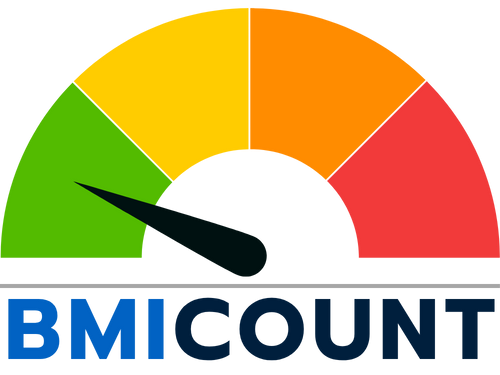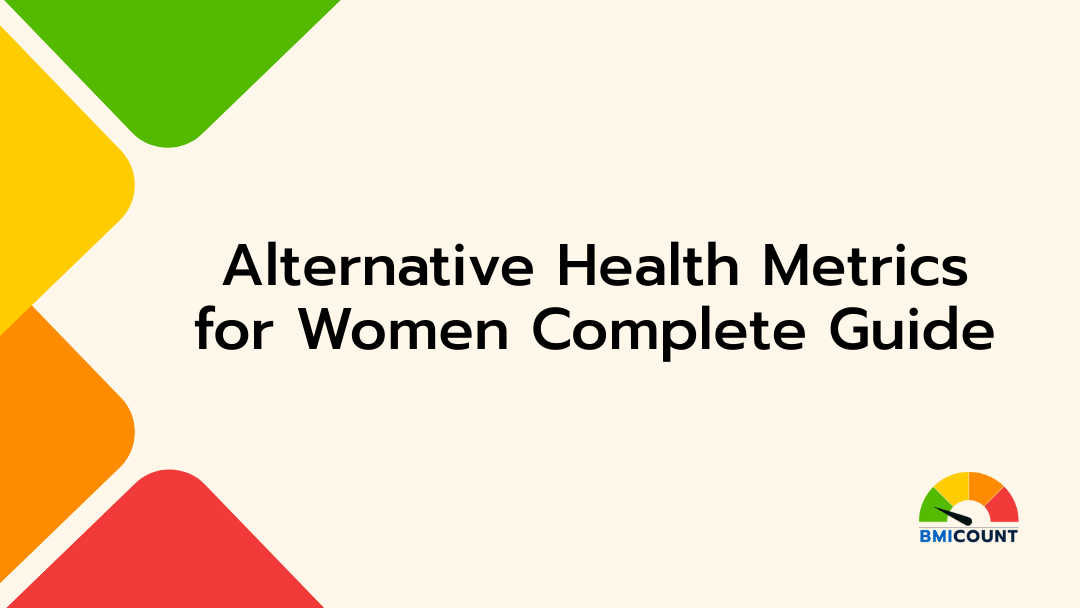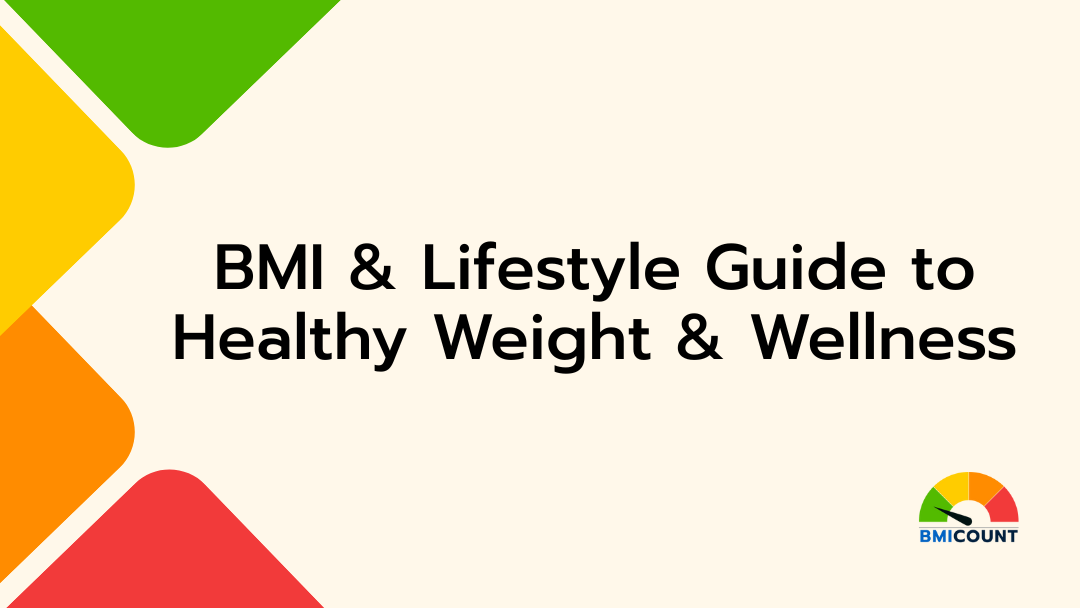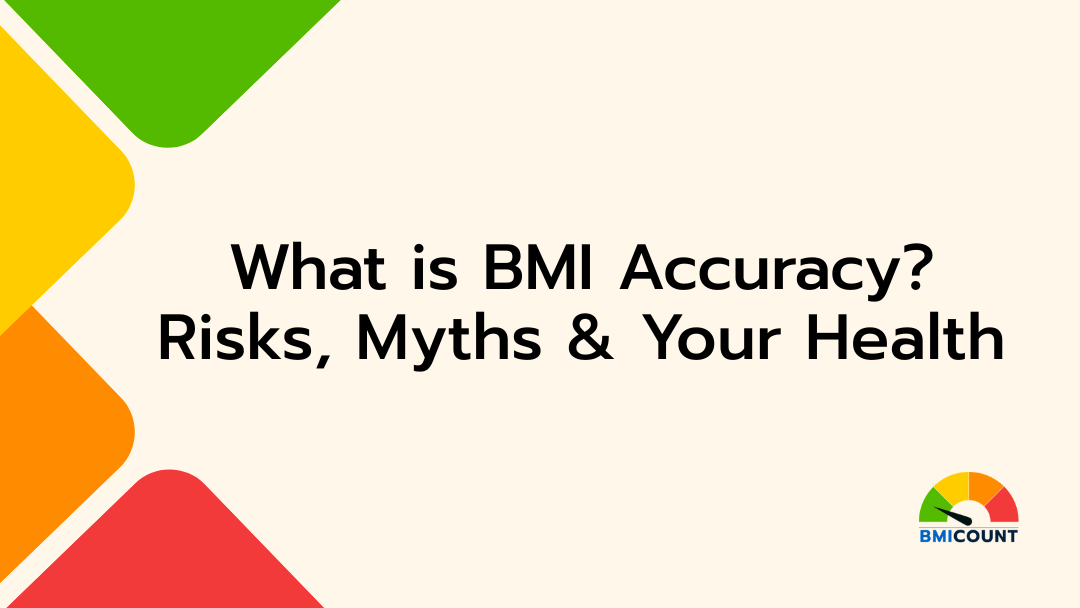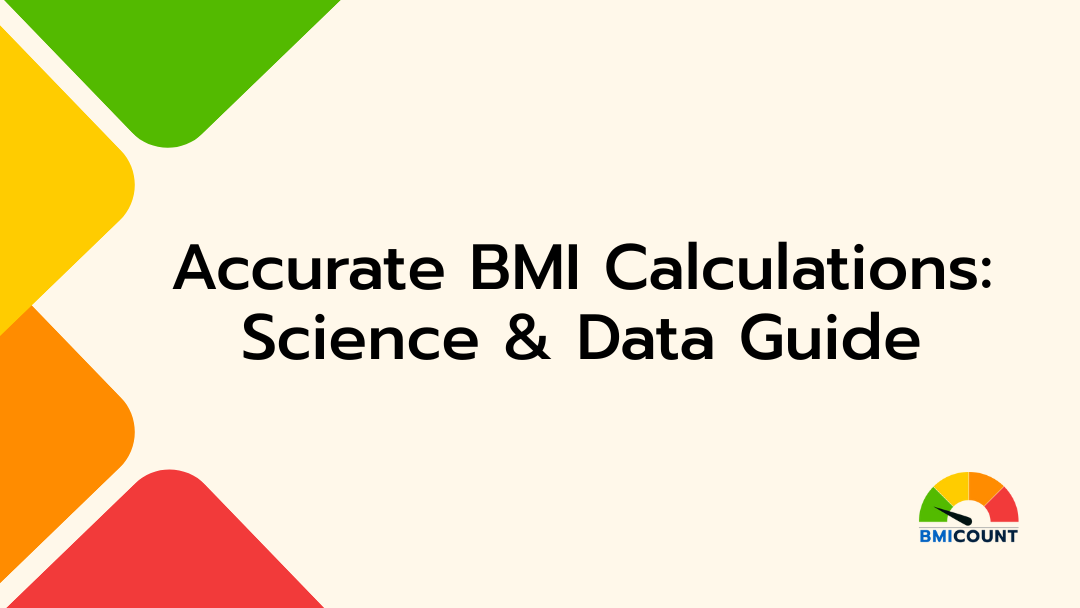Understanding the Importance of Kids BMI Calculator
As a parent, you’re constantly tracking your child’s growth from their first steps to how fast they shoot up each year. But when it comes to their weight, the number on the scale doesn’t tell the full story. That’s where a Kids BMI Calculator comes in.
Unlike adults, children’s bodies are constantly changing. Their growth patterns are influenced by age, sex, and development stages. This means using a fixed BMI scale like we do for adults simply doesn’t work.
Instead, pediatric health experts rely on BMI percentiles, which compare your child’s height and weight to peers of the same age and gender. These percentiles help determine whether a child is underweight, within a healthy range, or potentially at risk for overweight or obesity.
In this guide, we’ll break down everything you need to know about using a Kids BMI Calculator, how to interpret percentile results, and what steps you can take to support your child’s health journey — with confidence, clarity, and compassion.
We’ll also reference our Complete Guide to the BMI Calculator to give you a broader view of how BMI fits into overall health.
“BMI for kids isn’t about a single number — it’s about understanding where your child falls on a growth chart compared to others their age and sex. Percentiles offer a more personalized, meaningful look at their health.”
Why Kids Need a Different BMI System
BMI for children isn’t just about one number. Unlike adults who use fixed categories like “underweight” or “healthy,” a child’s BMI must be evaluated in relation to age and sex. That’s because kids are still growing and their body composition changes quickly.
Here’s Why the Adult BMI Scale Doesn’t Work for Kids:
- Adult BMI is static: Same cutoff applies to everyone
- Child BMI is dynamic: Must use percentile rankings
- Body fat changes with age: Especially during puberty
- Boys and girls develop differently: Separate growth patterns
Adult BMI vs Child BMI
| Feature | Adult BMI | Child BMI (2–19 years) |
|---|---|---|
| Type | Fixed number scale | Percentile-based (compared to peers) |
| Based On | Height & weight only | Height, weight, age, and sex |
| Classification | Underweight, Healthy, Overweight, Obese | Based on percentile ranges |
| Used For | General weight classification | Growth tracking & early risk detection |
| Reference Source | WHO/CDC Adult Charts | CDC Growth Charts or WHO Standards |
Why Percentiles Matter More:
BMI percentiles show where your child stands among kids of the same age and sex. For example:
- A BMI in the 5th percentile may indicate underweight
- A BMI in the 85th–95th percentile could signal risk for overweight
- These ranges help track health — not judge weight
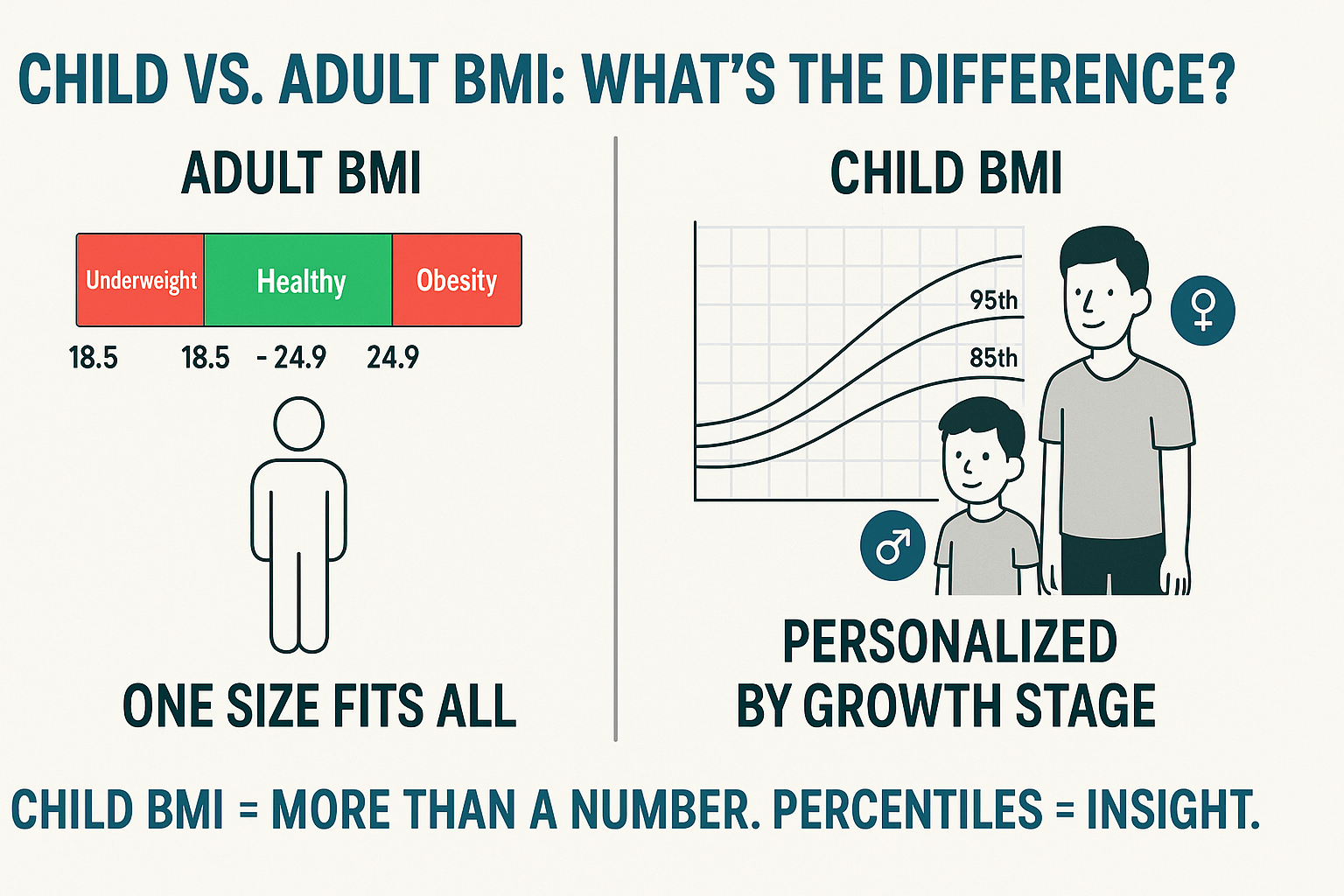
“Your child’s BMI isn’t measured in isolation it’s compared to thousands of kids the same age and sex. That percentile helps you understand their growth path, not just their weight.”
What Is a Child BMI Percentile Calculator?
A Child BMI Percentile Calculator is a tool that helps you assess your child’s body weight in relation to their age and sex. Rather than providing a one-size-fits-all number, it places your child on a growth chart to show how they compare to others in the same age group.
This approach offers a more accurate, age-appropriate way to understand if a child is underweight, at a healthy weight, or at risk for overweight or obesity.
How It Works
To calculate BMI for kids, the tool uses the following information:
- Age (in years and months)
- Sex (male or female)
- Height (inches or centimeters)
- Weight (pounds or kilograms)
The result is then matched to a percentile using CDC or WHO growth chart data.
Example Output from Kids BMI Calculator
To get started please check our Kids BMI Calculator and the Advance result we provide
Let’s say you input:
- Age: 8 years
- Sex: Boy
- Height: 50 inches
- Weight: 55 lbs
The result might show:
- BMI: 15.5
- Percentile: Below 5th percentile
- Category: Underweight
- Activity Insight: Sedentary (suggests more active play)
- Healthy Habit Focus: Balanced meals
You’ll also receive additional insights like:
- Body Surface Area (BSA)
- Option to copy or download the report as PDF
- Visual gauge for BMI category
What BMI Percentiles Tell You:
| Percentile Range | Category | What It Means |
|---|---|---|
| Below 5th | Underweight | Possible nutritional or health concern |
| 5th – 85th | Healthy weight | Normal growth pattern |
| 85th – 95th | Overweight | May be at risk for weight-related issues |
| Above 95th | Obese | Higher risk of chronic conditions |
These ranges aren’t just about weight they are used to monitor trends and flag potential concerns for pediatricians.
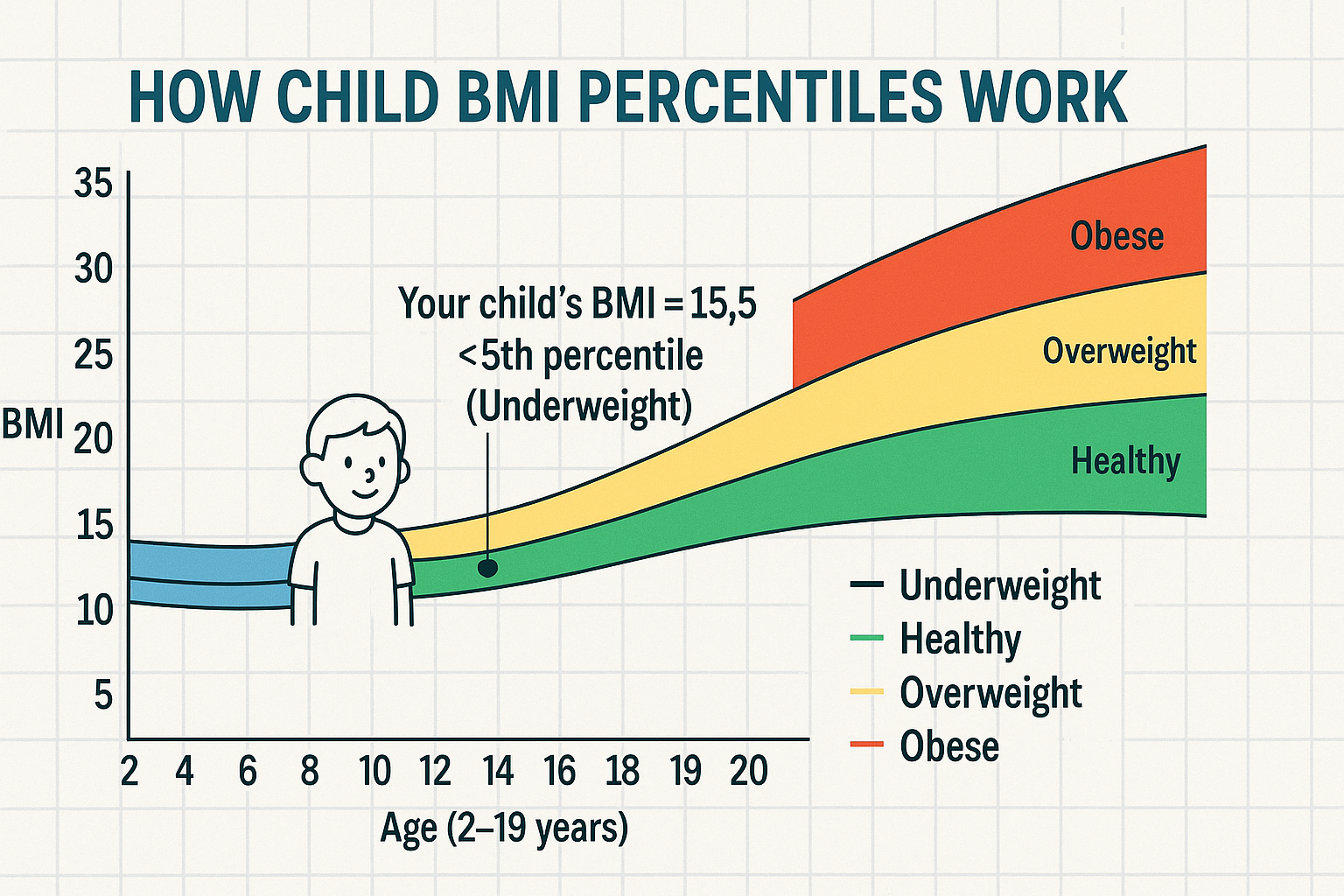
“A child BMI percentile calculator doesn’t label your child it compares their growth to thousands of healthy children their age. It’s a screening tool, not a diagnosis.”
How to Check Child BMI at Home
Learn about How to Check Child BMI, using a Kids BMI Calculator at home is quick and easy but to get meaningful results, accuracy matters. All you need are a few measurements and a few seconds to input the data. The tool does the rest.
With our Child BMI Calculator, you’ll not only receive a BMI number but also a personalized health insight that includes percentile range, healthy habit suggestions, and more.
What You Need to Measure:
Make sure you’re entering the most recent and accurate data for the best result.
- Child’s Age: In full years (and months if possible)
- Gender: Boys and girls have different growth patterns
- Height: Use a measuring tape (inches or cm)
- Weight: Weigh your child in the morning for consistency
- Activity Level: Sedentary, moderately active, or highly active
- Health Focus: Choose a healthy habit to track (meals, sleep, activity)
How to Use the Tool (Step-by-Step)
- Open the Kids BMI Calculator
- Enter all required fields: age, height, weight, gender, etc.
- Choose your child’s current activity level
- Pick a healthy habit goal to focus on
- Click “Count Your BMI”
The tool will then:
- Display your child’s BMI and weight category
- Indicate their percentile position on a growth chart
- Suggest an activity insight and healthy habit tip
- Offer additional data like Body Surface Area (BSA)
- Let you download a PDF or copy the results
Sample Output You’ll See
| Metric | Result |
|---|---|
| Child’s BMI | 15.5 |
| Percentile | Below 5th |
| Category | Underweight |
| Activity Insight | Consider adding daily physical play |
| Habit Goal | Focus on Balanced Meals |
| Body Surface Area (Mosteller) | 0.94 m² |
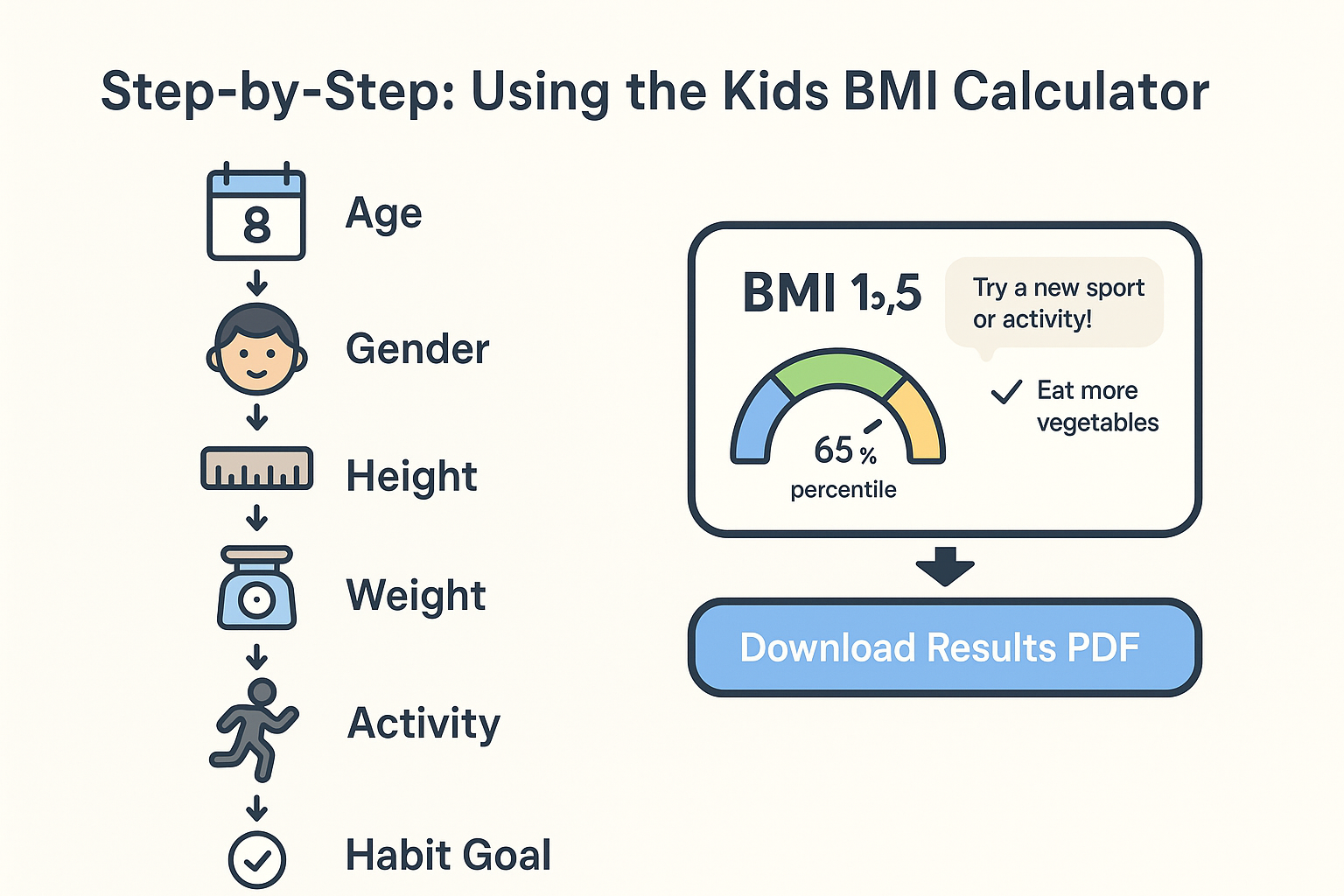
“With just a few clicks, you get more than a number our Kids BMI Calculator gives you age-specific results, visual feedback, and even health habit suggestions tailored to your child’s lifestyle.”
Interpreting Kids BMI Percentile Results
Once you’ve calculated your child’s BMI, the next step is understanding what the percentile result actually means to Interpreting Kids BMI. BMI percentiles show healthy BMI range for kids and how your child compares to others of the same age and gender, and they help identify potential growth or health concerns early on.
But remember BMI percentiles are a screening tool, not a diagnosis. They help start conversations with your pediatrician, not end them.
What Each Percentile Range Means
| Percentile | BMI Category | What It Suggests |
|---|---|---|
| Below 5th | Underweight | May indicate undernutrition or other concerns. Speak to a doctor. |
| 5th–84th | Healthy Weight | Typical growth pattern. Keep supporting healthy habits. |
| 85th–94th | Overweight | May signal increased risk of weight-related health conditions. |
| 95th and above | Obese | Higher risk for chronic conditions. A medical consultation is strongly recommended. |
📌 Percentiles adjust for age and sex, so a BMI of 18 might be healthy for one child and overweight for another depending on their percentile.
What to Do If the BMI Is Too High or Too Low
If your child falls into the underweight, overweight, or obese percentile zones, don’t panic. It’s not about judgment it’s about early awareness and proactive care.
Here’s what you can do:
- Underweight (<5th percentile):
- Monitor for signs of poor nutrition, low energy, or missed growth milestones
- Talk to your pediatrician about possible underlying causes
- Use your calculator’s suggestions to focus on nutrient-dense meals
- Overweight (85th–94th percentile):
- Encourage more physical activity, especially screen-free outdoor play
- Limit sugary drinks and processed snacks
- Model healthy behaviors as a family
- Obese (≥95th percentile):
- Schedule a wellness visit with your child’s doctor
- Ask about metabolic screening (especially if family history is a concern)
- Use the BMI and Lifestyle Guide to build daily health routines
Tips for Parents Interpreting BMI
- BMI percentiles are not final judgments
- A high or low BMI may be temporary (e.g. puberty growth spurts)
- Always look at trends over time, not just one reading
- Use the Complete Guide to the BMI Calculator to learn more about long-term tracking
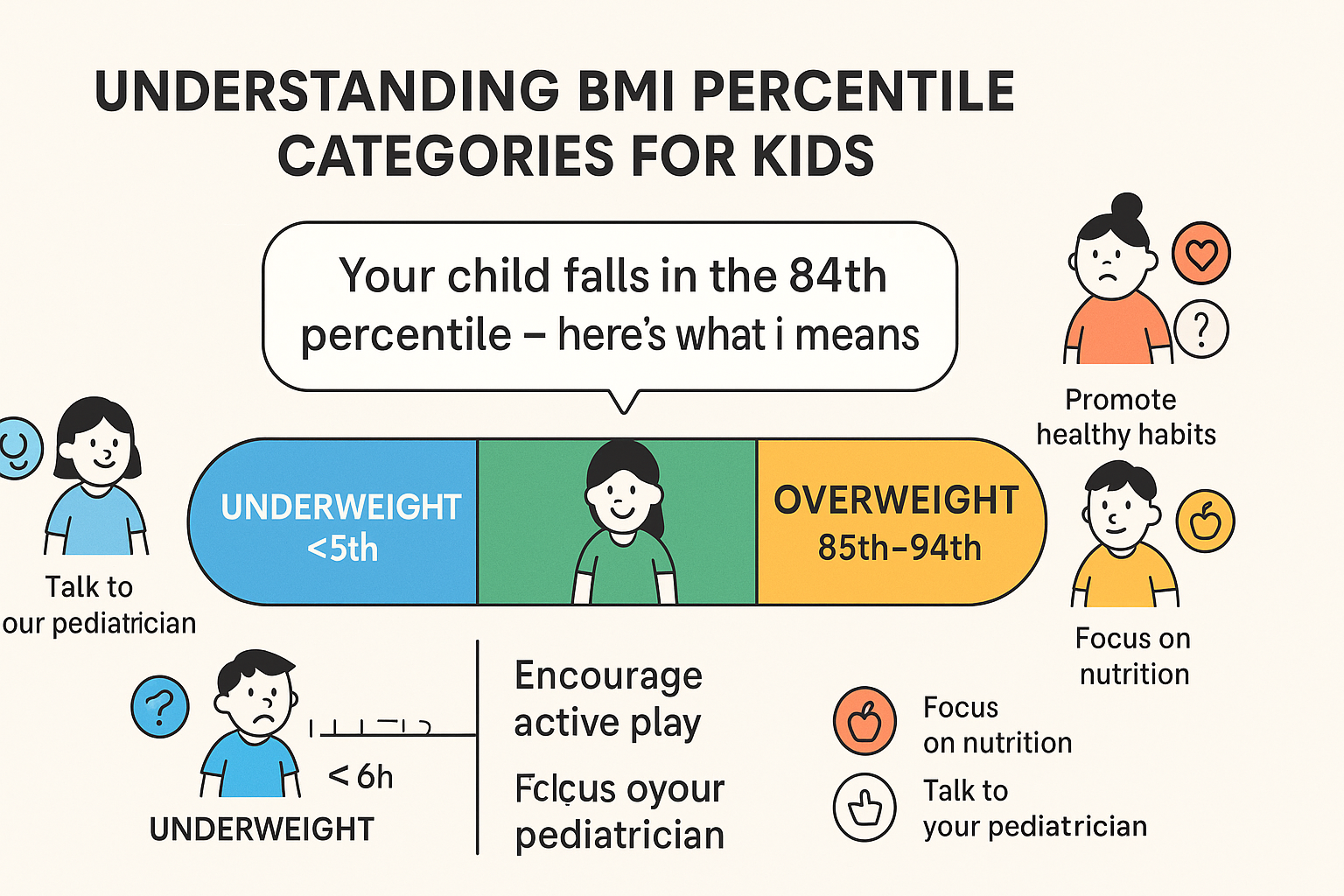
“BMI percentiles don’t define your child they simply help you track their growth in a healthier, more informed way. If something looks off, it’s a sign to dig deeper, not to panic.”
Why Healthy Habits Matter More Than the Number
While BMI percentiles can help spot potential growth issues, they don’t capture everything about your child’s health. What really matters long term are daily habits the ones that support strong bones, a healthy heart, good sleep, and a confident mindset.
Your child isn’t just a number on a growth chart. Their health is shaped by how they eat, move, sleep, and feel every single day.
Key Habits That Impact Child Health
| Habit Area | What to Focus On | Why It Matters |
|---|---|---|
| Nutrition | Whole foods, fruits, veggies, healthy fats, water | Supports steady growth and energy |
| Physical Activity | 60+ minutes/day of active play (not screen time) | Builds muscle, bone strength, and burns excess fat |
| Sleep | 9–12 hours depending on age | Restores body and regulates hormones |
| Screen Time | Limit to <2 hours/day (non-educational) | Helps avoid sedentary habits and sleep disruption |
| Mental Health | Confidence, body positivity, stress support | Prevents emotional eating and encourages resilience |
Make It a Lifestyle, Not a Fix
When your child’s BMI is too high or low, it’s tempting to jump into “correction mode.” But short-term fixes rarely last. Focus on small, lasting changes your child can enjoy and understand like:
- Making water the go-to drink at meals
- Involving kids in cooking and grocery shopping
- Making activity fun (e.g. bike rides, dancing, trampoline time)
- Creating a regular bedtime routine
- Talking positively about food and bodies — no shame or fear
Use BMI as a Compass Not a Judgment
Your child’s BMI percentile gives you a directional clue, not a full picture. What you do with that information is what really affects their health.
You can always return to the Kids BMI Calculator to track progress as new habits are built over time.
Also check out our full BMI and Lifestyle Guide for healthy routines that support both weight and well-being.
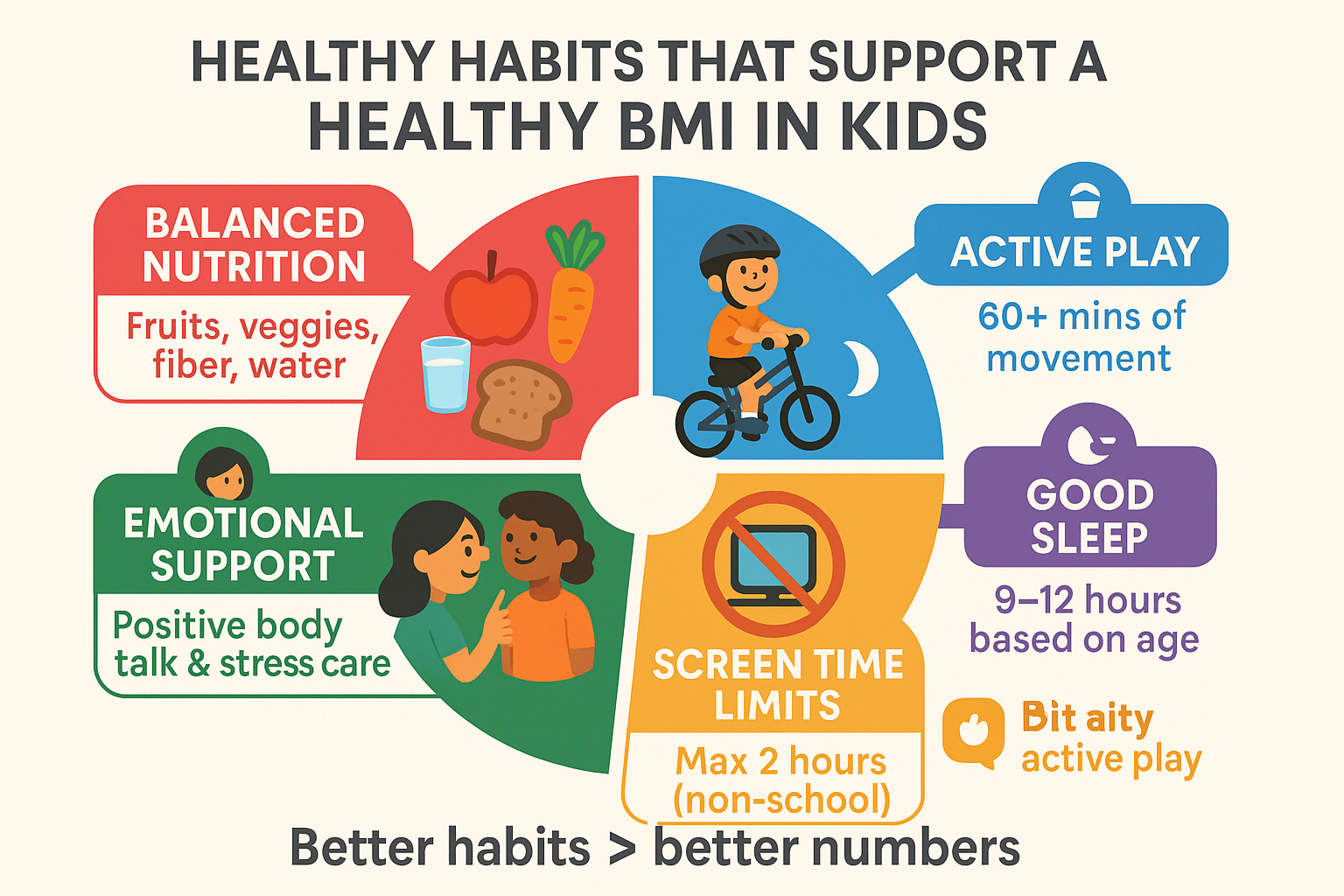
“The number matters less than the habits. With the right daily choices movement, balanced meals, sleep most children naturally find their healthy range over time.”
When to Consult a Pediatrician
While the Kids BMI Calculator offers a helpful starting point, there are times when it’s best to bring in a medical professional. BMI percentiles can flag potential issues — but only your child’s doctor can evaluate the full picture using clinical insight, health history, and growth patterns.
If your child’s results fall outside the healthy range — or change drastically over time — don’t ignore it. Think of it as an early signal, not a diagnosis.
When Should You Seek Medical Advice?
Here are some common scenarios when it’s smart to consult your child’s pediatrician:
- BMI Percentile Below 5th or Above 95th
– Could indicate underweight or obesity risks - Rapid Changes in Growth Pattern
– Sudden jumps or drops across percentile lines - Visible Signs of Health Issues
– Fatigue, shortness of breath, delayed growth, or poor appetite - Concerns About Puberty Timing
– Early or delayed development may affect BMI and overall growth - Family History of Chronic Conditions
– Diabetes, heart disease, or metabolic issues can influence how BMI is interpreted - Mental or Emotional Health Concerns
– Disordered eating, low self-esteem, or excessive focus on body image
What to Bring to Your Appointment
| What to Share | Why It Helps |
|---|---|
| BMI percentile results | Shows growth context over time |
| Recent height & weight | Confirms data for growth tracking |
| Notes on habits | Activity, sleep, screen time, eating routines |
| Questions or observations | Helps guide the conversation |
Many doctors will also cross-reference BMI with other tools like:
- Growth velocity charts
- Waist circumference
- Blood pressure and lab markers
- Family medical history
You can read more about how BMI fits into the full picture in our Complete Guide to the BMI Calculator.
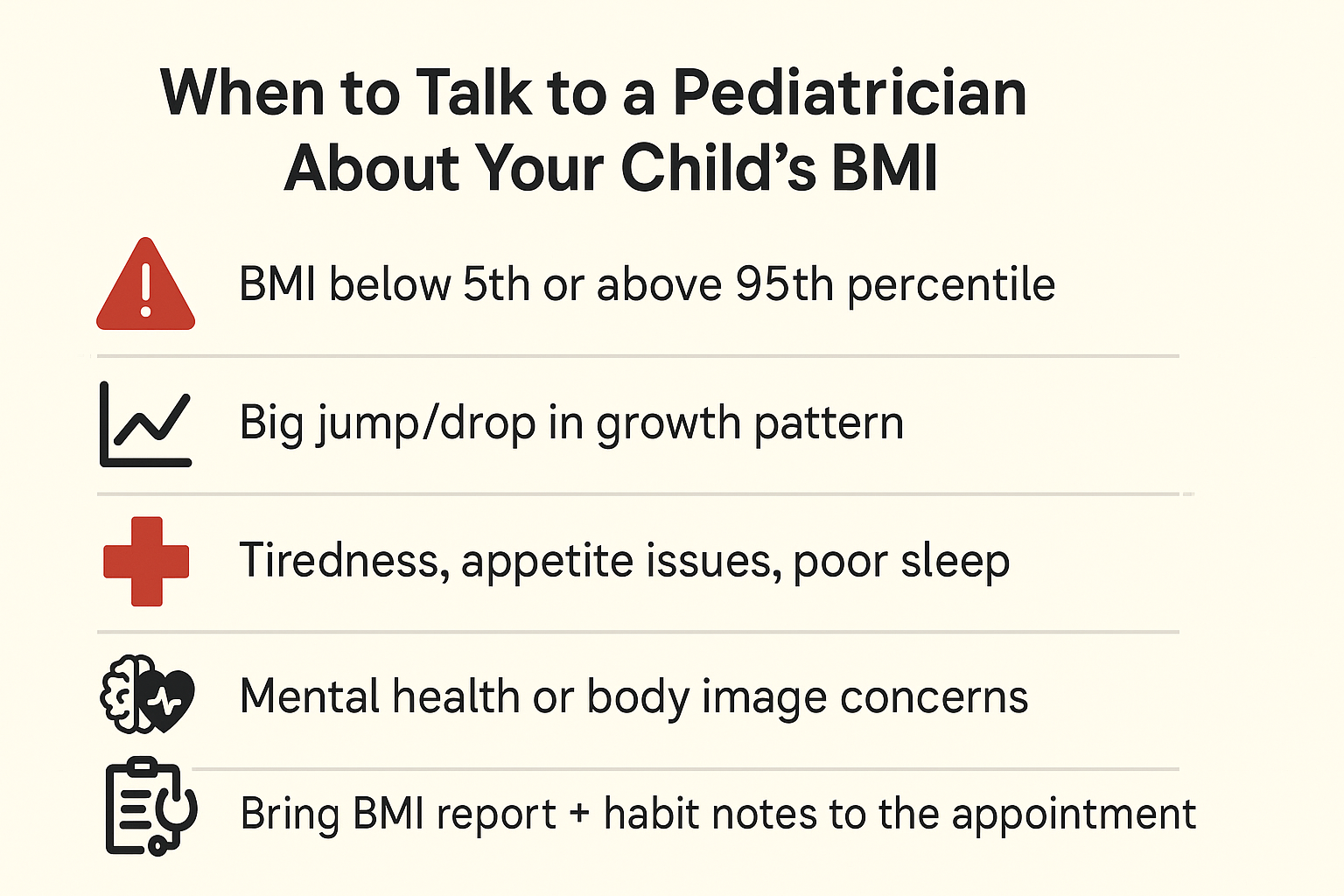
“If your child’s BMI percentile is unusually high, low, or changing fast don’t guess. A pediatrician can connect the dots between BMI, growth, lifestyle, and overall well-being.”
Final Thoughts: Percentiles Give You the Big Picture
BMI can be a useful tool but it’s the context that makes it powerful. For children and teens, that context comes from age-specific percentiles, not rigid categories. When used correctly, these percentiles help parents, caregivers, and health professionals track a child’s growth patterns and take early action when needed.
Whether your child’s result falls in a healthy range or flags a potential concern, what matters most is what you do next supporting good habits, staying informed, and working with your pediatrician when needed.
Keep Tracking and Learning
You don’t need to guess where your child stands — our tool helps you make confident, informed decisions.
- Use the Kids BMI Calculator regularly to monitor changes
- Refer to the Complete Guide to the BMI Calculator for deeper understanding
- Explore the BMI and Lifestyle Guide for tips on activity, meals, sleep, and screen time
- Keep the conversation open and positive — with your child and your doctor
Explore Other BMI Calculators
Want to check BMI for other members of your family? Explore our full set of calculators tailored by age and gender:
- General BMI Calculator
- BMI Calculator for Men
- BMI Calculator for Women
- Teen BMI Calculator
- Senior Citizen BMI Calculator
Each tool is designed with personalized results to help you or your loved ones take the next step toward better health.
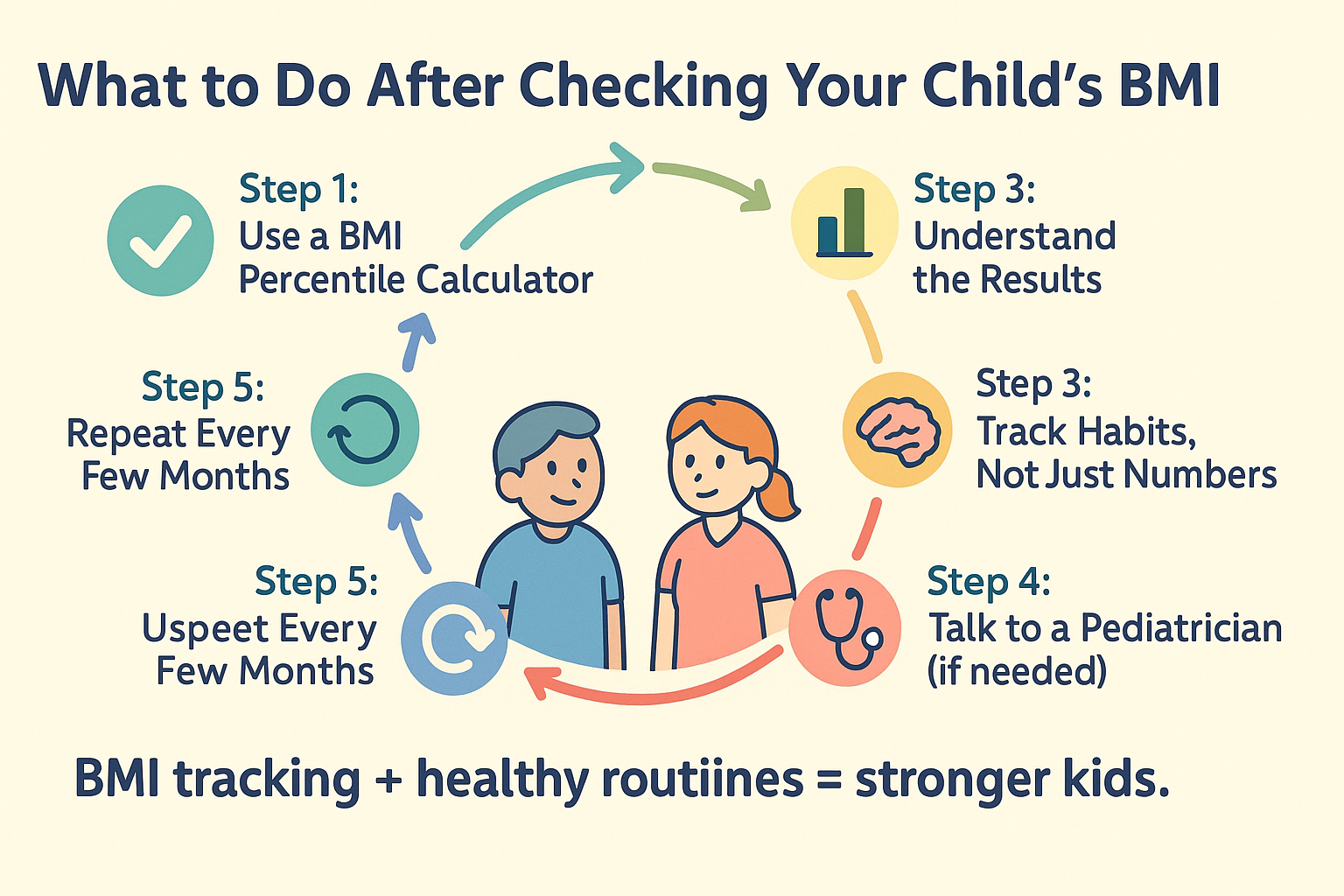
“Your child’s BMI percentile is just one part of a much bigger picture. When paired with healthy habits, loving support, and professional guidance — it becomes a tool for long-term well-being.”
Frequently Asked Questions
What is a BMI percentile for kids?
A BMI percentile compares your child’s height and weight with other children of the same age and sex. It shows how your child is growing compared to national averages, helping assess whether they are underweight, healthy, overweight, or obese.
What is a healthy BMI range for kids?
A healthy BMI for children falls between the 5th and 85th percentile on standardized growth charts. This range is adjusted for both age and gender, making it more accurate than adult BMI numbers.
How do I calculate my child’s BMI percentile?
You can use our Kids BMI Calculator. Just enter your child’s age, height, weight, and sex — the tool instantly provides their BMI, percentile rank, and weight category.
What does it mean if my child is in the 90th percentile for BMI?
If your child is in the 90th percentile, it means their BMI is higher than 90% of children their age and sex. This places them in the “overweight” category and may signal a risk for future health problems if not addressed.
Should I worry if my child is underweight or overweight?
Not necessarily. A single BMI reading isn’t a diagnosis. But if your child falls below the 5th or above the 85th percentile, it’s a good idea to speak with a pediatrician and review their growth, eating habits, and physical activity levels.
How often should I check my child’s BMI?
It’s helpful to check every 6–12 months during routine growth periods. If your child is experiencing rapid weight changes or has been flagged in a non-healthy percentile, monitor more frequently and consult your healthcare provider.
What other BMI tools are available for different age groups?
We offer several free calculators for specific age and gender groups:
– General BMI Calculator
– BMI Calculator for Men
– BMI Calculator for Women
– BMI Calculator for Teens
– BMI Calculator for Seniors
